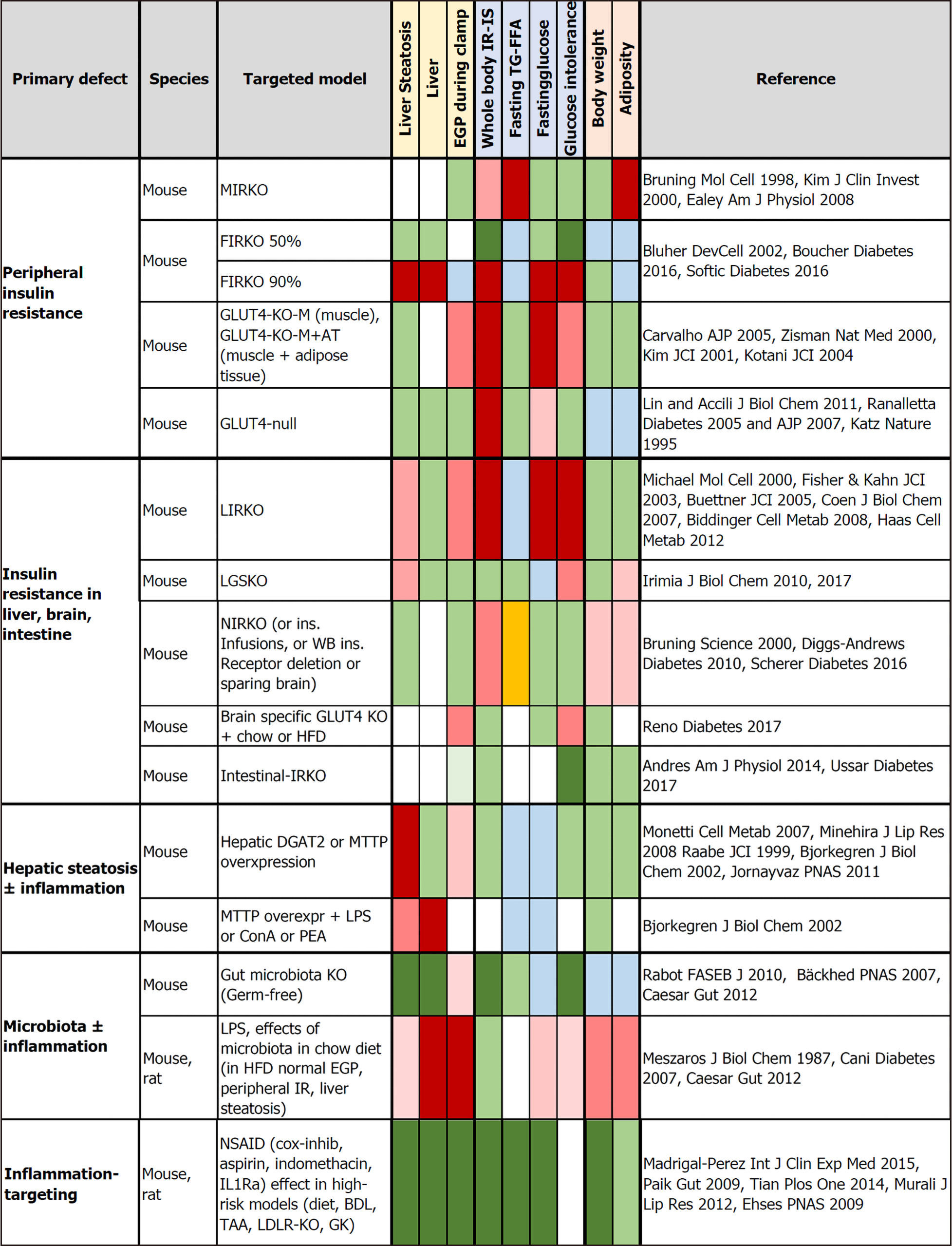Copyright
©The Author(s) 2021.
World J Gastroenterol. Aug 14, 2021; 27(30): 4999-5018
Published online Aug 14, 2021. doi: 10.3748/wjg.v27.i30.4999
Published online Aug 14, 2021. doi: 10.3748/wjg.v27.i30.4999
Figure 2 Tissue-targeted animal models evaluating the independent effects of tissue-specific insulin receptor knockout, or GLUT4 knockout, or the induction of steatosis or inflammation on metabolic outcomes, including liver steatosis, endogenous glucose production, glucose tolerance, and body weight.
Negative effects are shown in red and abnormalities reported as mild-moderate or not consistent in all studies in light red. Beneficial effects (dark) or no effect (light) are shown in green. Orange indicates opposite (high vs low) findings between studies. Light blue refers to a decrease that cannot be unequivocally interpreted as being beneficial or adverse to health. BDL: Bile duct ligation; ConA: Concanavalin A; DGAT2: Diacylglycerol O-acyltransferase 2; FFA: Free fatty acids; FIRKO: Fat-specific insulin receptor knockout; GK: Goto-Kakizaki; HFD: High-fat diet; IL-Ra: Interleukin-1 receptor antagonist; IR: Insulin resistance; IRKO: Insulin receptor knockout; KO: Knockout; LDLR-KO: Low-density lipoprotein cholesterol receptor knockout; LIRKO: Liver-specific insulin receptor knockout; LGSKO: Liver glycogen synthase knockout; LPS: Lipopolysaccharide; MIRKO: Muscle-specific insulin receptor knockout; MTTP: Microsomal triglyceride transfer protein; NIRKO: Brain-specific deletion of the insulin receptor; PEA: P. aeruginosa exotoxin A; TAA: Thioacetamide; TG: Triglycerides
- Citation: Rebelos E, Iozzo P, Guzzardi MA, Brunetto MR, Bonino F. Brain-gut-liver interactions across the spectrum of insulin resistance in metabolic fatty liver disease. World J Gastroenterol 2021; 27(30): 4999-5018
- URL: https://www.wjgnet.com/1007-9327/full/v27/i30/4999.htm
- DOI: https://dx.doi.org/10.3748/wjg.v27.i30.4999









